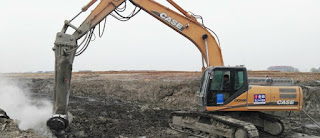Bottleneck analysis of petroleum contaminated soil remediation technology
The selection and treatment effects of petroleum contaminated soil remediation technology are closely related to the composition and properties and changes of petroleum pollutants in soil, and the soil environment. In the past 30 years, foreign study on bioremediation of petroleum contaminated soils showed rising trend, from the laboratory to the in situ remediation , from the isolation of degrading bacteria to the application of genetic engineering technology. In situ remediation technology is relatively simple, low cost, but there are environmental impact, time-consuming, slow and easy to make the proliferation of pollutants and other shortcomings. Ectopic remediation technology can improve the treatment efficiency by strengthening the degradation conditions, but need to transport the contaminated soil, and using a certain site and installation of ventilation equipment will increase the processing costs. The kind and residue of residual oil largely determine the technical difficulty,...

